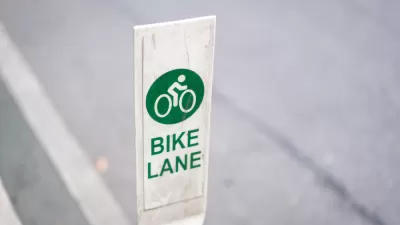2019 was the first year in which New York City's Department of Transportation kept affected bike lanes open during the UN's General Assembly. That should be a sign of things to come, advocates argue.

"Every year — until this one — the city shuttered Manhattan's First and Second Avenue protected bike lanes 'in the 40s' during [the] United Nations General Assembly in September," write Laura Shepard and Jon Orcutt of Bike New York. "This year, however, the city maintained bike access on both avenues — by far the most important and heavily used East Side bicycle routes."
"The significance of the change goes well beyond two avenues during a week in September. It's a sign that city government is moving away from its practice of establishing bike lanes and then ignoring them," they continue.
They argue the city should double down on that policy. For example, DOT should consider bike network operation and maintenance a priority on par with street maintenance. And it should deploy a dedicated team to enforce bike access around construction sites.
Finally, DOT needs to provide more notice to cyclists when routes close or conditions change, again on par with what it provides to drivers. "DOT issues dozens of street closure and detour notices for motorists every week; the agency must start thinking about other street users as part of this routine."
FULL STORY: Op-Ed: DOT’s Growing Commitment to the Bike Network

Alabama: Trump Terminates Settlements for Black Communities Harmed By Raw Sewage
Trump deemed the landmark civil rights agreement “illegal DEI and environmental justice policy.”

Planetizen Federal Action Tracker
A weekly monitor of how Trump’s orders and actions are impacting planners and planning in America.

The 120 Year Old Tiny Home Villages That Sheltered San Francisco’s Earthquake Refugees
More than a century ago, San Francisco mobilized to house thousands of residents displaced by the 1906 earthquake. Could their strategy offer a model for the present?

In Both Crashes and Crime, Public Transportation is Far Safer than Driving
Contrary to popular assumptions, public transportation has far lower crash and crime rates than automobile travel. For safer communities, improve and encourage transit travel.

Report: Zoning Reforms Should Complement Nashville’s Ambitious Transit Plan
Without reform, restrictive zoning codes will limit the impact of the city’s planned transit expansion and could exclude some of the residents who depend on transit the most.

Judge Orders Release of Frozen IRA, IIJA Funding
The decision is a victory for environmental groups who charged that freezing funds for critical infrastructure and disaster response programs caused “real and irreparable harm” to communities.
Urban Design for Planners 1: Software Tools
This six-course series explores essential urban design concepts using open source software and equips planners with the tools they need to participate fully in the urban design process.
Planning for Universal Design
Learn the tools for implementing Universal Design in planning regulations.
Clanton & Associates, Inc.
Jessamine County Fiscal Court
Institute for Housing and Urban Development Studies (IHS)
City of Grandview
Harvard GSD Executive Education
Toledo-Lucas County Plan Commissions
Salt Lake City
NYU Wagner Graduate School of Public Service





























